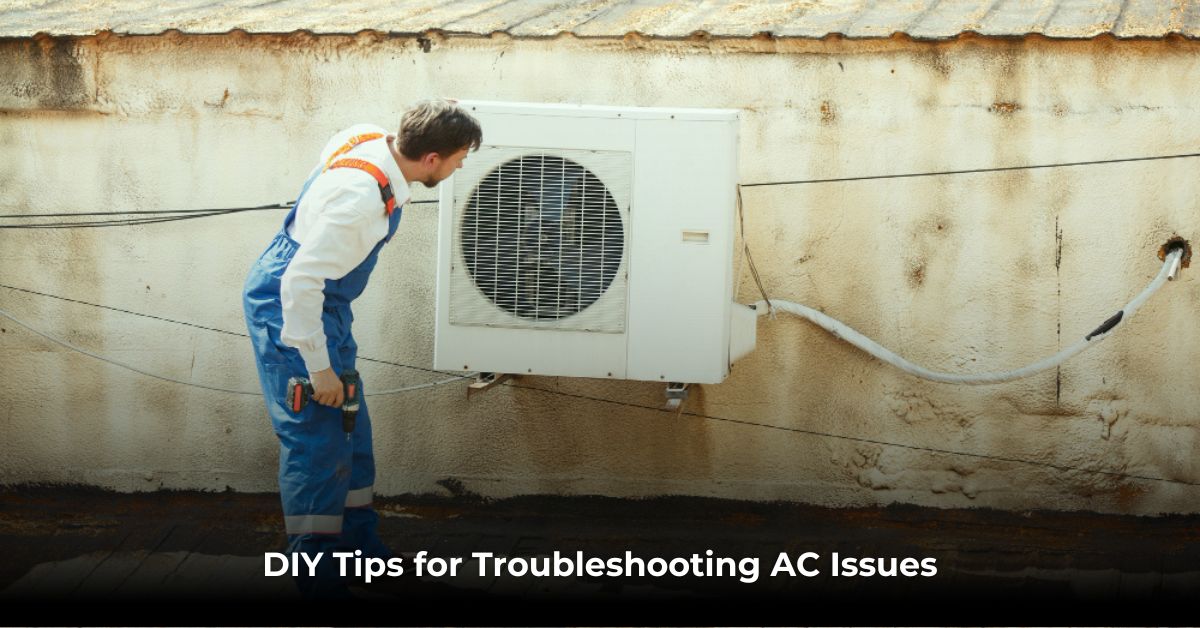DIY Tips for Troubleshooting AC Issues
An air conditioning (AC) unit is a lifesaver during the hot months, keeping your home cool and comfortable. However, like any appliance, AC units can encounter issues. While some problems require professional attention, many can be troubleshooted and resolved with a little DIY effort. Here are some DIY tips for troubleshooting common AC issues.
1. Check the Thermostat Settings
Before diving into more complex troubleshooting, ensure your thermostat is set correctly:
Correct Mode: Make sure the thermostat is set to "cool" and not "heat" or "off".
Temperature Setting: Set the temperature lower than the current room temperature to trigger the cooling function.
Thermostat Batteries: If your thermostat is battery-powered, replace the batteries to ensure it’s functioning properly.
2. Inspect and Replace Air Filters
Dirty or clogged air filters can significantly impact the performance of your AC:
Locate the Filter: Find the air filter in your AC unit, usually behind a panel on the front of the unit.
Inspect the Filter: Check if the filter is dirty or clogged. If it appears grey or covered in dust, it’s time for a replacement.
Replace the Filter: Replace disposable filters every 1-3 months. If your filter is washable, clean it thoroughly and allow it to dry before reinstalling.
3. Clean the Condenser Coils
The outdoor condenser coils can accumulate dirt and debris, reducing efficiency:
Turn Off the Power: Switch off the power to your AC unit to avoid any electrical hazards.
Remove Debris: Clear any leaves, grass, or debris around the outdoor unit.
Clean the Coils: Use a garden hose to gently rinse the coils. For stubborn dirt, use a soft brush or coil cleaner.
Check for Damage: Inspect the coils for any signs of damage or corrosion.
4. Check the Circuit Breaker
If your AC won’t turn on, it might be a simple electrical issue:
Locate the Breaker Box: Find the electrical panel in your home.
Check the Breaker: Look for the breaker labeled “AC” or “air conditioner”. If it’s tripped, reset it by flipping it off and then on again.
Monitor for Issues: If the breaker trips again, there might be a deeper electrical issue that requires professional attention.
5. Inspect the Air Ducts
Leaky or blocked air ducts can affect airflow and cooling efficiency:
Visual Inspection: Check accessible ductwork for visible leaks or disconnections.
Feel for Air Leaks: Run your hand along the ducts to feel for escaping air.
Seal Leaks: Use duct tape or mastic sealant to fix any leaks or gaps in the ductwork.
6. Ensure Proper Airflow
Obstructed airflow can strain your AC unit and reduce its effectiveness:
Check Vents: Ensure all supply and return vents are open and unobstructed by furniture, curtains, or other items.
Clean Vents: Remove any dust or debris from the vents to ensure proper airflow.
7. Examine the Condensate Drain Line
A clogged condensate drain line can cause water damage and affect AC performance:
Locate the Drain Line: Find the drain line near the indoor air handler unit.
Check for Blockages: Look for any visible blockages or standing water in the drain pan.
Clean the Drain Line: Use a wet/dry vacuum to clear clogs. Pour a mixture of vinegar and water down the drain line to clean it and prevent future clogs.
8. Listen for Unusual Noises
Unusual noises can indicate various issues within the AC unit:
Rattling or Banging: Loose parts or debris in the unit can cause these noises. Tighten any loose screws or remove debris.
Hissing or Bubbling: These sounds may indicate a refrigerant leak, which requires professional repair.
Squealing: A worn or misaligned belt can cause squealing. Check the belt and replace if necessary.
9. Monitor Refrigerant Levels
Low refrigerant levels can reduce cooling efficiency:
Check for Ice: Ice buildup on the refrigerant lines or evaporator coil indicates low refrigerant.
Professional Help: Refrigerant issues require a professional technician for diagnosis and recharging.
10. Regular Maintenance
Preventative maintenance can keep your AC running smoothly:
Schedule Annual Tune-Ups: Have a professional technician inspect and maintain your AC unit annually.
Regular Cleaning: Clean or replace filters regularly, and keep the outdoor unit free of debris.
Conclusion
By following these DIY tips, you can troubleshoot and resolve many common AC issues, ensuring your unit runs efficiently and keeps your home cool. However, for more complex problems or if you're unsure about any steps, it’s best to call in a professional.
For residents in Gurgaon, Repairo offers expert AC repair and maintenance services. Our skilled technicians can handle any AC issue, providing quick and reliable solutions, including AC repair service in Gurgaon, to keep your home comfortable year-round. Schedule a service with Repairo today and enjoy peace of mind knowing your AC is in capable hands.

.png)


Comments
Post a Comment